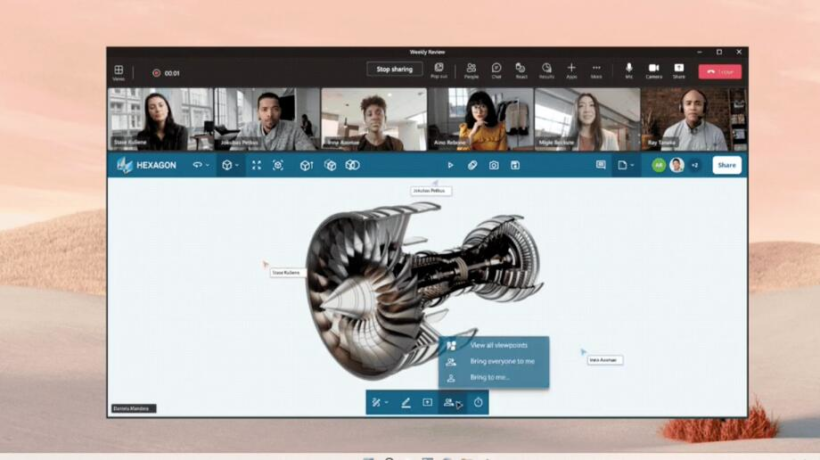If you feel like you’ve spent the last couple of years talking to your colleagues inside your business’ video-meeting app of choice—be it Zoom, Microsoft Teams, Google Meet, Webex, or something else—you’re not alone. But when you’re in one of these environments, you’re probably talking about stuff you’re working on in other pieces of software. And that’s where collaboration can start to break down.
“We’ve noticed in our use of Teams and other sorts of collaboration tools that what people do is static, non-interactive screen sharing,” says Jeff Teper, corporate VP of Microsoft 365 collaboration. “And that means people can’t really collaborate on the data.”
At its Build conference, Microsoft is unveiling plans to change that for Teams’ 250 million-plus users. The company is introducing Live Share, a new feature for developers that lets them create collaborative software experiences that live inside of Teams sessions. Once built, such software will be available everywhere Teams is, on Windows, Mac, iOS, Android, and the web.
Now, there’s nothing new about the idea that people might want their video-meeting service of choice to play nicely with other apps essential to their work. Teams already has a well-stocked app marketplace of its own, as does Zoom. But even before you get to the notion of creating software that exists within something like Teams, letting multiple people simultaneously interact with data is a significant software engineering challenge. “We’ve done it in our collaborative apps, and some of our peers have as well,” says Teper. “But most applications don’t have real-time collaboration built into them. It’s really hard.”
ALL THE TOOLS
Live Share is designed to expand on the inherently real-time nature of a Teams call in ways that weren’t previously possible. It’s built on top of Microsoft Azure services designed to streamline the process of putting together a collaborative app. Fluid Framework, for example, helps developers construct such software using JavaScript, a language they’re probably already familiar with. “We’re actually hosting that application, and it’s aware of the people in the meeting and the security, and people can interact on it,” says Teper. “They can go back and forth on video or engineering diagrams together, as opposed to having two windows and paging back and forth between them.”
To demonstrate what’s possible, Microsoft gave me a preview of an ambitious Live Share app from industrial hardware and software maker Hexagon that lets coworkers examine, manipulate, and discuss 3D models together. The presenter can see from what angle each participant is looking at the model and use an onscreen pointer to direct attention. Rather than just passively viewing a static object, everybody can make changes to the model on the fly, as seen in this video:
Along with Hexagon, Microsoft’s initial list of third-party Live Share developers includes Frame.io, Skillsoft (seen in the video below), MakeCode, Accenture, Parabol, and Breakthru. That roster might or might not include anyone whose tools you’re eager to access within a Teams meeting. But Teper says that he expects an array of organizations to build on the Live Share platform, including purveyors of both specialized applications and more widely used offerings. He also thinks that some company will merely extend their existing products, while others will create useful new experiences and charge for them.
“The word ‘leapfrog’ is the most overused word,” says Teper. “But there is nothing else like this that lets a video-meeting sharing experience be truly interactive and gives you the underlying platform so you don’t have to build it all yourself. . . . Developers like both new technology that delivers better experiences, and the opportunity to make money from lots of users. And we have both with Teams.”







